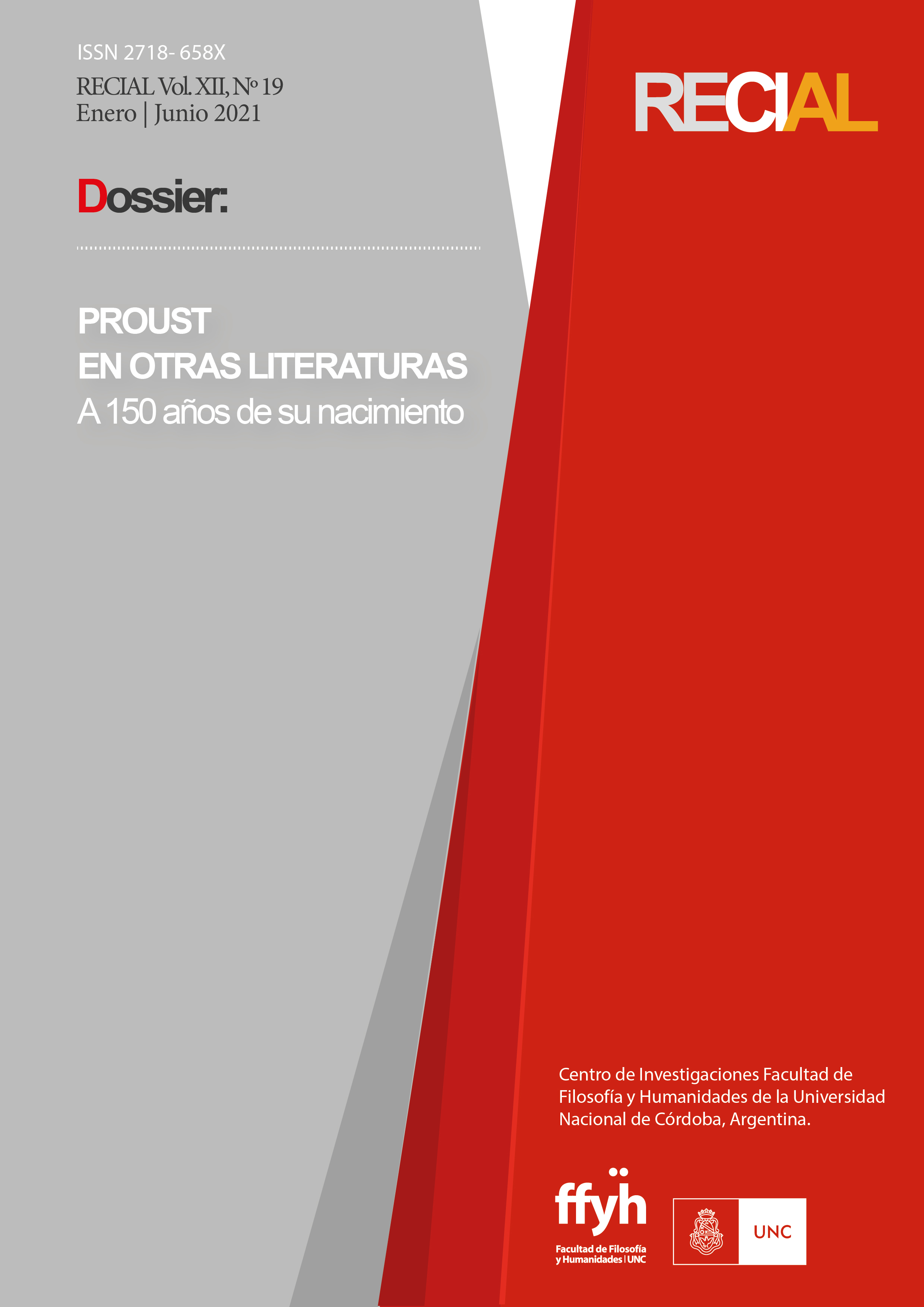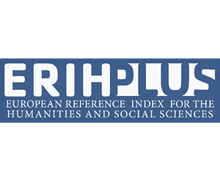The imprint of Proust on the work of George Seferis
DOI:
https://doi.org/10.53971/2718.658x.v12.n19.33836Keywords:
cratylism, recreator, mirror, maieutica, spermatic, nekyia, mythificationAbstract
If we trust Seferis when he claims that there is no parthenogenesis in art and that each of us is made of all that we have assimilated, then we can safely reach the conclusion that, in this melting pot which constitutes the artistic makeup of Yorgos Seferis, the Proustian influence has played one of the most significant roles. And this may not be as obvious in his poetic production as it is in his unique novel, Six Nights on the Acropolis.
The present study aspires to do exactly that: painstakingly pinpoint the Seferian sources of inspiration in the work of Marcel Proust. Apart from the most obvious affinities which concern the plot and the thematology, there are also many more imperceptible ones, such as the soteriological function of literature or the ubiquitous obsession of the past, among others.
Downloads
References
Agacinski, S. (2005). Métaphysique des sexes: Masculin/Féminin aux sources du christianisme. París: Seuil.
Alighieri, D. (1985). La Divine Comédie: L’Enfer (Trad., introducción y notas de J. Risset). París: GF-Flammarion.
Argyriou, A. (1990). Dix-sept textes pour Séféris. Atenas: Kastaniotis.
Barthes, R. (2003). El grado cero de la escritura (Trad. de N. Rosa y P. Willson). Buenos Aires: Siglo Veintiuno.
Beaton, R. (2001). Seferis and the novel: A reading of Six Nights on the Acropolis. Byzantine and Modern Greek Studies, (25), 156-184.
Burkert, W. (2007). Religión griega. Arcaica y clásica (Trad. de H. Bernabé). Madrid: Abada.
Doubrovsky, S. (1974). La place de la madeleine, Écriture et fantasme chez Proust. París: Mercure de France.
Dumortier J. (1954). L'évocation des morts dans l'Odyssée. Bulletin de l'Association Guillaume Budé, (3), 27-40.
Eliot, T. S. (2001). La tierra baldía (Trad. de J. Malpartida Ortega). Barcelona: Círculo de Lectores.
Emerson, R. W. (1960). The Journals and Miscellaneous Notebooks of Ralph Waldo Emerson. Cambridge: Belknap Harvard UP.
Genette, G. (1972). Figures III. París: Seuil.
Homero. (2006). Odisea (Trad. de J. M. Pabón). Madrid: Gredos.
Kohler, D. (1985). L’aviron d’Ulysse: l’itinéraire poétique de Georges Séféris. París: Les Belles Lettres.
Kohler, D. (1989). Georges Séféris, qui êtes-vous? Lyon: Éditions La manufacture.
Mirto, M. S. (2012). Death in the Greek world (Trad. de A. M. Osborne). Oklahoma: University of Oklahoma Press.
Platón. (2008). Œuvres complètes. París: Flammarion.
Plotino. (1985). Enéadas III-IV (Trad. de J. Ipal). Madrid: Gredos.
Proust, M. (2005). La parte de Guermantes (Trad. de C. Manzano). Buenos Aires: Debolsillo.
Proust, M. (2007). Por la parte de Swann (Trad. de C. Manzano). Buenos Aires: Debolsillo.
Proust, M. (2008a). A la sombra de las muchachas en flor (Trad. de C. Manzano). Buenos Aires: Debolsillo.
Proust, M. (2008b). Sodoma y Gomorra (Trad. de C. Manzano). Buenos Aires: Debolsillo.
Proust, M. (2009). La prisionera (Trad. de C. Manzano). Buenos Aires: Debolsillo.
Proust, M. (2010). El tiempo recobrado (Trad. de C. Manzano). Buenos Aires: Debolsillo.
Proust, M. (1987-1989). À la recherche du temps perdu (4 vol.). París: Gallimard.
Ramnoux, C. (1986). La nuit et les enfants de la nuit dans la tradition grecque. París: Flammarion.
Seferis, G. (1968). Mythistorima y otros poemas. Barcelona: Orbis.
Seferis, G. (1988). Pages de journal: 1925-1971. París: Mercure de France.
Seferis, G. (1992a). Essais I. Atenas: Ikaros.
Seferis, G. (1992b). Essais II. Atenas: Ikaros.
Seferis, G. (1994). Poèmes. Atenas: Ikaros.
Seferis, G. (1996). Jours V: janvier 1, 1945- avril 19, 1951. Atenas: Ikaros.
Seferis, G. (2007). Breve antología (Trad. de J. G. Torres). México: UNAM.
Seferis, G. (2013). Six nuits sur l’Acropole. Clermont-Ferrand: Le bruit du temps.
Sófocles. (2000). Antígona (Trad. de A. Alamillo). En Autor, Tragedias. Madrid: Gredos.
Theotokás, G. (2005). Georges Séféris comme je l’ai connu. En Autor, À la Recherche de la clarté: Essais sur la littérature nouvelle grecque et européenne. Atenas: Éstia.
Vernant, J.-P. (2001). La bella muerte y el cadáver ultrajado. En Autor, El individuo, la muerte y el amor en la Antigua Grecia (pp. 45-81). Buenos Aires: Paidós.
Vernant, J.-P. (2007). Œuvres (Tomos 1 y 2). París: Seuil.
Vitti, M. (1994). Usure et logos: Introduction à la poésie de Georges Séféris. Atenas: Éstia.
Downloads
Published
Issue
Section
License

This work is licensed under a Creative Commons Attribution-NonCommercial-ShareAlike 4.0 International License.
Aquellos/as autores/as que tengan publicaciones en esta revista, aceptan los términos siguientes:
- Los/as autores/as conservarán sus derechos de autor y garantizarán a la revista el derecho de primera publicación de su obra, el cuál estará simultáneamente sujeto a la Licencia de reconocimiento de Creative Commons que permite a terceros compartir la obra siempre que se indique su autor y su primera publicación esta revista.
- Los/as autores/as podrán adoptar otros acuerdos de licencia no exclusiva de distribución de la versión de la obra publicada (p. ej.: depositarla en un archivo telemático institucional o publicarla en un volumen monográfico) siempre que se indique la publicación inicial en esta revista.
- Se permite y recomienda a los/as autores/as difundir su obra a través de Internet (p. ej.: en archivos telemáticos institucionales o en su página web), luego de su publicación en la revista. (Véase El efecto del acceso abierto).























